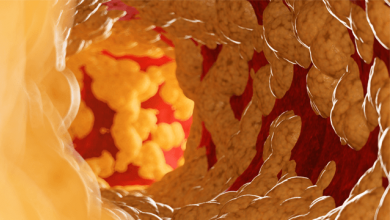Search results
Author(s):
Abdulah Alrifai
,
Mohamad Kabach
,
Jonathan Nieves
,
et al
Added:
3 years ago
More than 10 million Americans suffer annually from angina.1 For decades, most of the attention has been focused on epicardial coronary artery disease (CAD). In a European registry of 11,000 stable angina patients, 65% of women and 32% of men had no obstructive CAD (<50% stenosis); however, multiple other studies have demonstrated only 30% of patients have significant obstructive epicardial…
View more
Author(s):
Nuno Cortez-Dias
,
Fausto J Pinto
Added:
3 years ago
Coronary artery disease (CAD) represents the leading cause of morbidity and mortality in western countries. Many non-invasive stress tests are currently available for detecting CAD and assessing prognosis. Non-invasive stress techniques comprise exercise electrocardiographic (ECG) stress testing and imaging techniques, namely exercise/pharmacological stress echocardiography (SEcho) and exercise…
View more
Author(s):
K Lance Gould
Added:
3 years ago
Clinical applications of cardiac positron emission tomography (PET) have made dramatic advances over the past three years, particularly in myocardial perfusion imaging. These advances include cardiac-specific PET technology, specialized software, and profound biological insights into myocardial perfusion far beyond the traditional binary interpretation of perfusion images as normal or abnormal…
View more
Author(s):
K Lance Gould
Added:
3 years ago
Clinical applications of cardiac positron emission tomography (PET) have made dramatic advances over the past three years, particularly in myocardial perfusion imaging. These advances include cardiac-specific PET technology, specialized software, and profound biological insights into myocardial perfusion far beyond the traditional binary interpretation of perfusion images as normal or abnormal…
View more
Author(s):
Sebastian Kelle
,
Eike Nagel
Added:
3 years ago
Cardiovascular magnetic resonance imaging (MRI) has moved from niche applications to the center of cardiovascular decision-making. Today, cardiovascular MRI offers several options for detecting ischemia in patients with known or suspected coronary artery disease (CAD). Over the last few years, much evidence has been accumulated of the diagnosis of CAD and heart failure with cardiovascular MRI.1–3…
View more
Coronary Vasospasm
Author(s):
Jingwen Huang
,
Rebecca Steinberg
,
Matthew J Brown
,
et al
Added:
10 months ago
Article
Author(s):
Keith B Allen
Added:
3 years ago
Abstract
Many patients with angina secondary to coronary artery disease (CAD) respond to medical management or can be completely revascularized using available percutaneous coronary interventions or coronary artery bypass grafting (CABG). There is evidence, however, to indicate that up to 25% of patients are incompletely revascularized following CABG, and that incomplete revascularization is a…
View more
Computed Tomographic Angiography and Nuclear Myocardial Perfusion Imaging—A Comparison in Detecting…
Author(s):
Matthew J Budoff
,
Ambarish Gopal
Added:
3 years ago
Article
Author(s):
Matthew J Budoff
,
Ambarish Gopal
Added:
3 years ago
The cost and the risk of invasive angiography have encouraged the development of new diagnostic methods that allow the coronary arteries to be visualized non-invasively. The last decade has seen great strides in the field of cardiac imaging, particularly in the ability of cardiac computed tomographic angiography (CTA) to visualize the coronary lumen with excellent diagnostic accuracy (see Table 1…
View more
Author(s):
Morton J Kern
,
Katherine M Yu
Added:
3 years ago
Coronary artery disease (CAD), the most common cause of morbidity and mortality in the US, is frequently identified by coronary angiography. Decisions for treatment are often based on angiography alone, absent other clinical indicators for intervention. However, by angiography alone, conventional wisdom has suggested that a coronary stenosis is significant if there is at least a 50 % diameter…
View more












